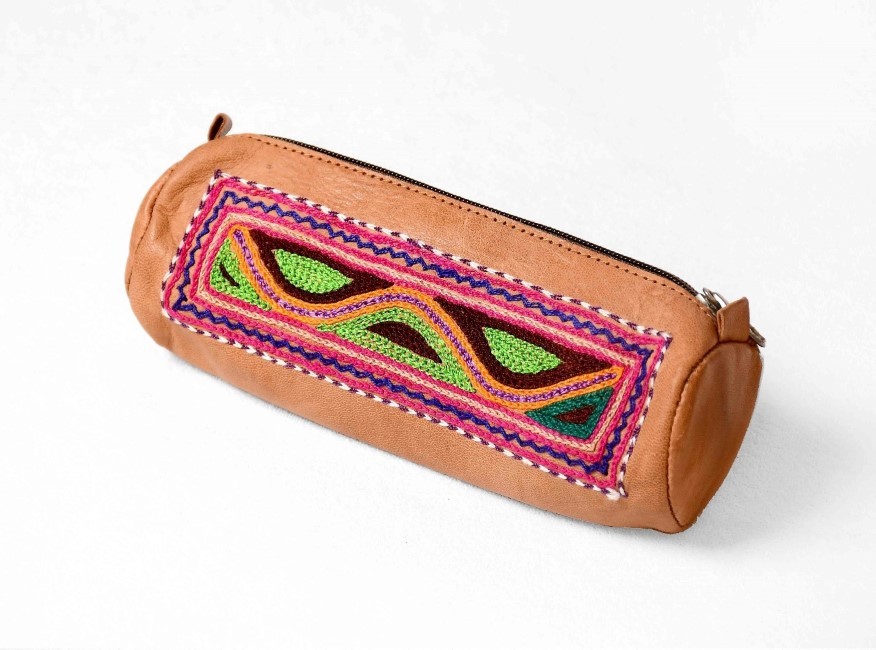
Leather Work
Barmer District, located in the state of
Rajasthan, is renowned for its traditional leather work. The skilled artisans
in the region have been practicing the art of leather craftsmanship for
generations. The local economy thrives on the production and trade of various
leather products.
The leatherwork in Barmer District
primarily involves the use of hides from cattle and camels. The process starts
with the curing of the hides, which is usually done locally in the rural areas.
After the curing process, the hides are tanned using traditional techniques to
enhance their durability and texture.
Once the hides are ready, the artisans
skillfully transform them into a wide range of leather products. Barmer is
particularly famous for its exquisite leather goods, including jackets, bags,
wallets, belts, lampshades, and decorative items. The craftsmanship and
attention to detail in these products make them highly sought after by both
domestic and international customers.
The leatherwork in Barmer is known for its
vibrant colors and intricate designs. Artisans often incorporate traditional
Rajasthani motifs, such as floral patterns, peacocks, and geometric shapes,
into their creations. These designs are carefully handcrafted using various
tools and techniques to achieve precision and beauty.
The leather artisans in Barmer District
play a vital role in preserving the rich cultural heritage of the region. Their
craftsmanship and skills have been passed down through generations, ensuring
the continuity of this traditional art form. The leatherwork industry also
provides employment opportunities for many locals, contributing to the
socio-economic development of the district.
In recent years, efforts have been made to
promote and market Barmer's leather products on a global scale. The government
and various organizations have organized exhibitions, trade fairs, and
workshops to showcase the unique craftsmanship and quality of these products.
These initiatives have helped create awareness and expand the market for
Barmer's leatherwork beyond the region.

Tools
Used: Various tools are used in leather work,
including try squares, dividers, measuring tape, utility knives, rulers,
cutting/clicking knives, paring/skiving knives, hammers, hand stampers,
creasing tools, revolving punches, scissors, thread trimmers, framing tools,
frame lifters, leather pushing tools, frame-pressing tools, button fitting/snap
setting tools, eyeleting tools, riveting tools, smooth rolling wheels, circular
slickers, bone folders, daubers, awls, thread trimming tools, stitching awls,
tracer stipplers, outline modelers, ball modeling tools, mallets, design
punches, spacing wheels, lacing ponies, heat burnishing tools, screwdrivers,
wrenches, portable thread burning tools, electric hand drills, pliers, pincers,
bench grinders, oil stones, oil cans, etc.

Process: Leather goods are manufactured using the following processes:
Assorting: Leather assorting is done based
on the required thickness for various parts of the product, size, color,
defects, texture, grain, and stretch/elasticity. Leather hides and skins may
have suffered mechanical injuries and diseases. The defects are distinctly
marked with a silver marking pencil.
Clicking: Clicking or cutting is carefully
done to obtain the right components from the appropriate parts of the leather.
This process can be done mechanically (for bulk production) or by using hacksaw
blade knives.
Splitting: A splitting machine is used to
reduce the thickness of leather and make it uniform. The top grain layer is
further processed to create the final products.
Skiving: Skiving involves reducing the
thickness of the edges of leather pieces using a skiving machine/knife. This
ensures that joining/folding the pieces together doesn't make the finished
product bulky. However, reducing the thickness more than required could weaken
the strength of the finished product.
Embossing: Embossing or plating is done
using a hydraulic embossing machine that works on vacuum pressure and has a
heating device. Heat and pressure are used to iron out any wrinkles in the
leather before assembling them together.
Staining: The leather edges are smoothened
and stained using water-soluble dyes. The stains are dried, wax polished, and
the glossiness is improved.
Creasing: Creasing helps compress the cut fibers,
strengthen them, give a darker and glossy line to the edges, and improve the
aesthetic appearance.
Punching: Holes are made to fix buckles,
buttons, eyelets, rivets, studs, etc.
Overall, the leatherwork in Barmer District
represents a harmonious blend of tradition, skill, and creativity. It continues
to be an integral part of the local culture and contributes significantly to
the district's economy and cultural identity